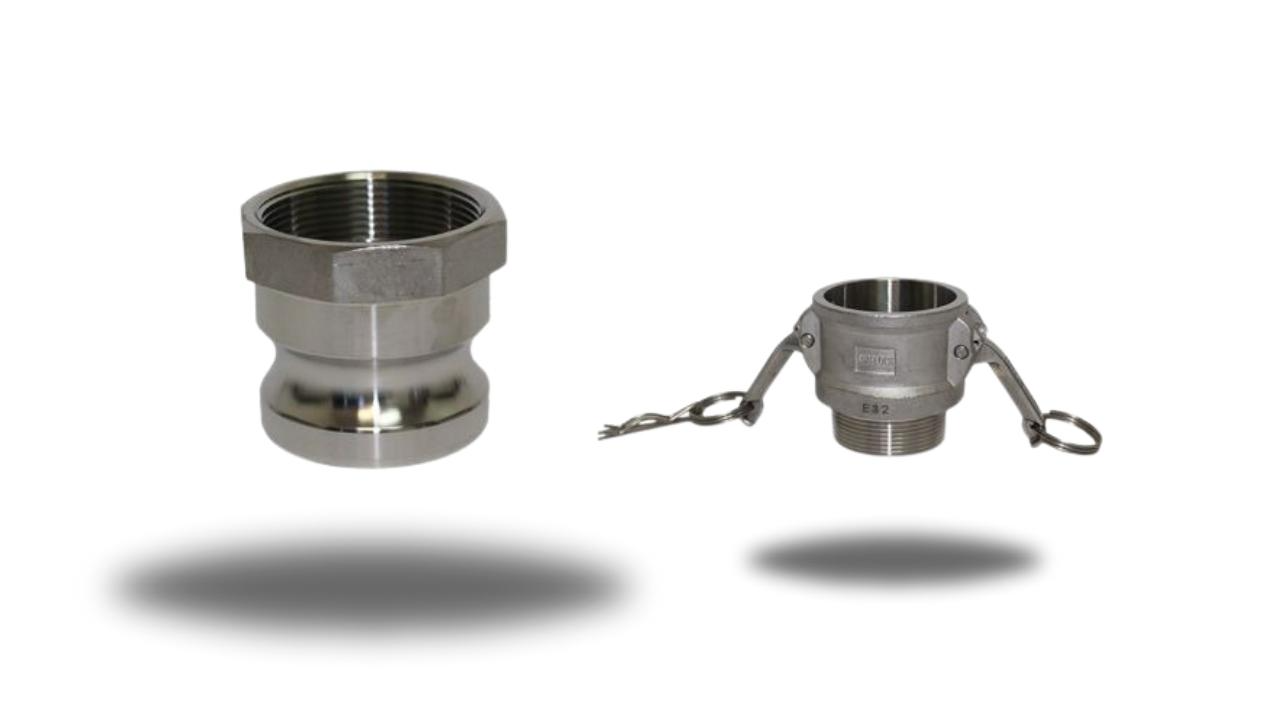Camlock couplings or fittings are special tools used in industries to ensure the smooth flow of liquids or gases. They connect two pipes or hoses together. Camlock couplings have a cam and groove design, which makes them very easy to use. In fact, it’s the go-to choice across different industries worldwide. From manufacturing to construction, camlock couplings are a staple in many industries.
Do you want to learn more? Whether you are new to them or just reading to refresh your knowledge, this guide will explain everything about cams and grooves.
Let’s start learning about Camlock fittings now!
Understanding Camlock Fittings
Camlock fittings are quick-connect couplings used to join hoses and pipes efficiently. They have two main components: a male adapter and a female coupler. The male adapter features a grooved end, while the female coupler has two handles clamped down to create a secure seal. This design eliminates the need for threaded connections, allowing rapid assembly and disassembly.
Components and Working Principles
- Components
Camlock couplings are ingeniously designed, comprising two primary components that work seamlessly to create a secure, leak-proof connection:
- Male Adapter
The male adapter is one of the two essential parts of a camlock fitting. It features a grooved end, typically resembling a circular ring with notches or grooves along its circumference. When inserted into the corresponding female coupler, these grooves are strategically positioned to facilitate a tight and secure connection. Male adapters are available in various sizes and materials to suit different applications and fluid transfer requirements.
- Female Coupler
The female coupler is the counterpart to the male adapter and serves as the receiving end of the camlock fitting. It is a hollow cylindrical body with two handles or arms extending outward. These handles are pivotal to the working mechanism of the camlock fitting, as they enable the user to open and close the coupler to secure or release the connection. The interior of the female coupler is designed to accommodate the grooved end of the male adapter snugly, forming a tight seal when adequately engaged.
- Working Principles
The working principle of these couplings is elegantly simple yet highly effective. It involves the precise alignment and engagement of the male adapter and female coupler to create a leak-proof connection. Here’s how it works:
- Insertion
To initiate the connection process, the grooved end of the male adapter is inserted into the open end of the female coupler. The grooves on the male adapter correspond to matching tabs or protrusions inside the female coupler, ensuring proper alignment and engagement.
- Clamping
Once the male adapter is fully inserted into the female coupler, the user applies pressure to the handles of the coupler, causing them to close inward. This action compresses the two halves of the camlock fitting together, creating a tight and secure seal between the mating surfaces of the male adapter and the female coupler. The handles of the coupler are designed to lock in place once fully closed, preventing accidental disconnection during operation.
- Seal Formation
As the handles of the female coupler are closed, the grooved end of the male adapter is pressed firmly against a sealing gasket or O-ring housed within the coupler. This compression forces the gasket to expand and conform to the contours of the mating surfaces, effectively sealing the connection and preventing any leakage of fluid.
- Disconnection
To disconnect the camlock fitting, the user simply reverses the process by releasing the handles of the female coupler, allowing them to spring back to their open position. This action relieves the pressure on the male adapter, enabling it to be quickly withdrawn from the coupler without any residual fluid leakage.
Selection Criteria
When choosing cam locks, several key factors must be considered to ensure optimal performance and safety in fluid transfer systems. Here’s a detailed breakdown of the selection criteria:
- Application: The specific industry and type of fluid being transferred play a crucial role in determining the type of camlock fitting required. Different industries have unique requirements, and selecting fittings tailored to the application ensures efficient and reliable operation.
- Material: Selecting the appropriate material is paramount for compatibility with the fluid being transferred and environmental conditions. Stainless steel fittings offer corrosion resistance and durability, making them suitable for a wide range of applications. Aluminum fittings are lightweight and corrosion-resistant, ideal for general-purpose use. Brass fittings are durable and antimicrobial, making them suitable for applications where hygiene is essential.
- Size: Compatibility with hose and pipe diameters is essential to ensure a proper fit and secure connection. Choosing the correct size ensures optimal fluid flow and prevents leaks or pressure loss.
- Pressure and Temperature: Select couplings rated for the application’s intended pressure and temperature range. Fittings must withstand the operating conditions without compromising performance or safety.
- Compatibility: Verify compatibility with existing equipment and systems to ensure seamless integration and functionality. Matching thread types, connection styles, and compatibility with the system components are critical for smooth operation and reliability.
Applications of Camlock Fittings
- Oil and Gas Industry: Transfer of crude oil, petroleum products, and hydraulic fluids.
- Chemical Processing: Safely handling chemicals, acids, solvents, and corrosive materials.
- Agriculture and Irrigation: Water transportation and irrigation systems in agricultural settings.
- Manufacturing and Industrial Processes: Fluid transfer in manufacturing facilities, including air compressors, coolant lines, and machinery connections.
- Construction and Mining: In construction and mining operations, dewatering, slurry transfer, and water supply.
- Pharmaceuticals and Biotechnology: Secure fluid transfer in pharmaceutical production and research applications.
Conclusion
Camlock fittings are versatile and reliable components in fluid transfer systems across diverse industries. By understanding their principles, types, selection criteria, and applications, users can make informed decisions when choosing and using camlock couplers for their specific needs. Whether in oil and gas, chemical processing, agriculture, manufacturing, construction, or pharmaceuticals, camlocks are crucial in ensuring efficient and safe fluid handling operations.


